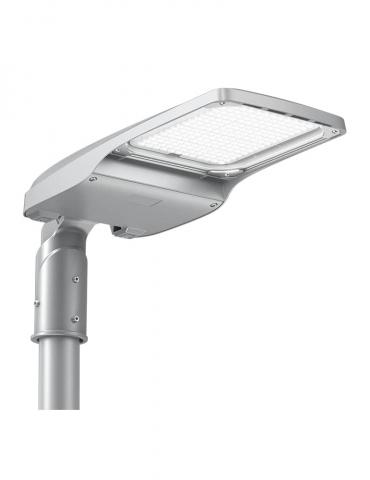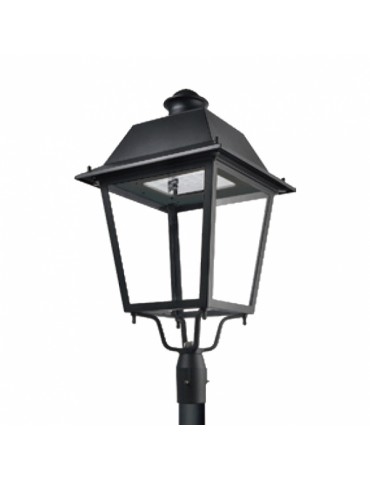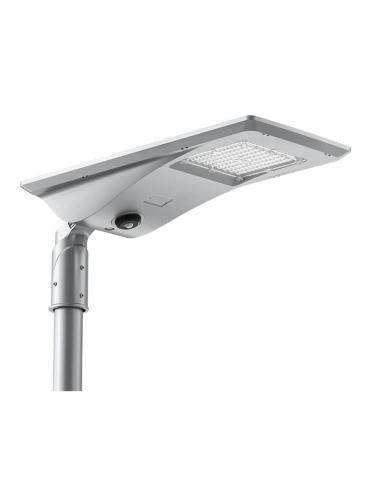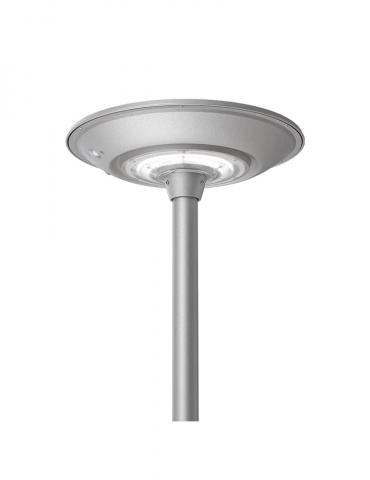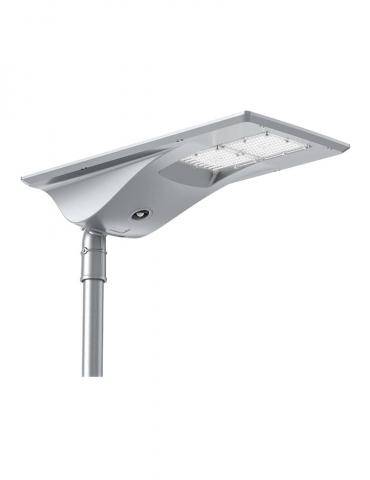Today worldwide, the LED street light is being incorporated as an excellent alternative to replace traditional luminaires that work with metallic additives, mercury vapor or sodium vapor. Street lighting ranges from the illumination of vehicle traffic areas to pedestrian areas. It should provide comfortable vision, ability to see vehicles or pedestrians, visual acuity and speed of perception among other points.
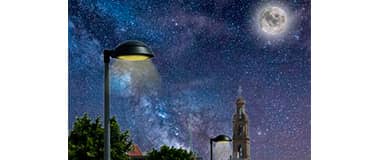
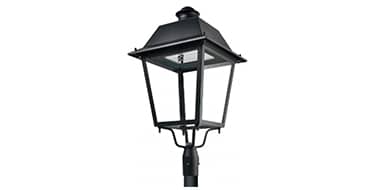
ADVANTAGES OF LED STREET LIGHTS
Due to the breakthrough in LED lighting, there are now many advantages over traditional luminaires. The following are some examples:
- - They have a higher efficiency, so to produce the same amount of lighting, it requires less power.
- - Much longer service life compared to traditional lighting.
- - The start is automatic, so it starts instantly and without stabilization time.
- - Improved colour reproduction (CRI).
APERTURE ANGLE (OPTICAL)
The opening angle defines the shape of the lighting produced by the LED street lamp. There are symmetrical and asymmetrical optics, which depending on the area to be illuminated, they will be combined to achieve the best level of uniformity and illumination. Then show some examples:
30°
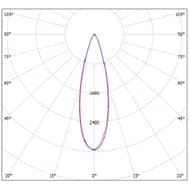
60°
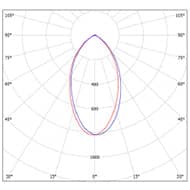
50x90°
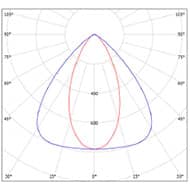
90°
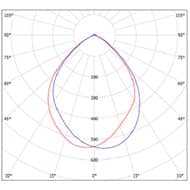
40x120°
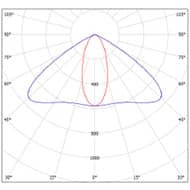
120°
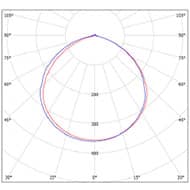
COLOUR TEMPERATURE (K)
When choosing an LED lamp, you must observe the color temperature that it has, which indicates the color of the lighting that produces the luminaire, being the white color the higher the temperature. In some communities in Spain, the regulation requires that the temperature of outdoor lighting is less than 4000K (neutral white).

SOLAR LED STREET LIGHT
In Venalsol Smart Light we have the Solero LED lamp, which works with solar energy, being perfect for all those places where there is no electrical network. This luminaire has a high efficiency (200 lm/W).
Thanks to the efficiency and battery, this luminaire is recharged in 8 hours and can be used continuously for 3 days.

MINIMUM REQUIREMENTS TO BE MET
Table 1 - Road classification
| Classification | Type of road | Road traffic speed (km/h) |
|---|---|---|
| A | of high speed | v > 60 |
| B | of moderate speed | 30 < v < 60 |
| C | bike lanes | -- |
| D | of low speed | 5 < v < 30 |
| E | pedestrian lanes | v < 5 |
Table 2 - Lighting classes for type A carriageways
| Situaciones de proyecto | Types of roads | Class of lighting(*) |
|---|---|---|
A1 |
• Separate roadways with intersections at different levels and controlled access (motorways and highways). | |
Traffic intensity
|
ME1 ME2 ME3a |
|
| • Single-carriageway roads with two-way traffic and limited access (expressways). | ||
Traffic intensity
|
ME1 ME2 |
|
A2 |
• Intercity roads without separation of sidewalks or bike lanes. • Local roads in rural areas without a service road. |
|
Traffic intensity
|
ME1/ME2 ME3a/ME4a |
|
A3 |
• Main roads and bypass routes. • Interurban roads with unrestricted access. • High-traffic, rapid radial and district urban distribution routes. • Main roads in the city and crossing of towns. |
|
Traffic intensity and complexity of the road layout.
|
ME1 ME2 ME3b ME4a/ME4b |
Table 3 - Lighting classes for track type B
| Project situations | Road types | Class of lighting(*) |
|---|---|---|
B1 |
• Secondary urban roads connecting to major urban traffic. • Local distribution routes and access to residential areas and farms. |
|
Traffic intensity
|
ME2/ME3c ME4b/ME5/ME6 |
|
B2 |
• Local roads in rural areas. | |
Traffic intensity and complexity of the road layout.
|
ME2/ME3b ME4b/ME5 |
Table 4 - Lighting classes for track types C and D
| Project situations | Road types | Class of lighting(*) |
|---|---|---|
C1 |
• Independent cycle paths along the roadway, between towns in open area and junction in urban areas | |
Traffic flow of cyclists
|
S1/S2 S3/S4 |
|
D1 - D2 |
• Parking areas on motorways and highways. • Parking lots in general. • Bus stations. |
|
Flow of pedestrian traffic
|
CE1A/CE2 CE3/CE4 |
|
D3 - D4 |
• Suburban residential streets with sidewalks for pedestrians along the roadway • Very limited speed zones |
|
Traffic flow for pedestrians and cyclists
|
CE2/S1/S2 S3/S4 |
Table 5 - Lighting classes for type E track
| Project situations | Road types | Class of lighting(*) |
|---|---|---|
E1 |
• Connecting pedestrian spaces, pedestrian streets and sidewalks along the roadway. • Bus stops with waiting areas. • Pedestrian shopping areas. |
|
Flow of pedestrian traffic
|
CE1A/CE2/S1 S2/S3/S4 |
|
E2 |
• Commercial areas with restricted access and priority use of pedestrians. | |
Flow of pedestrian traffic
|
CE1A/CE2/S1 S2/S3/S4 |
Table 6 - ME series of dry vials type A and B
| Class of lighting | Road surface luminance in dry conditions | Disability glare | Lighting of surroundings | ||
|---|---|---|---|---|---|
| Lm (cd/m2) | Luminance Average Global Ratio Uo | Longitudinal U₁ | Uniformity Threshold T∥ (%)** [maximum] | Uniformity Environment SR*** | |
| ME1 | 2,00 | 0,40 | 0,70 | 10 | 0,50 |
| ME2 | 1,50 | 0,40 | 0,70 | 10 | 0,50 |
| ME3a | 1,00 | 0,40 | 0,70 | 15 | 0,50 |
| ME3b | 1,00 | 0,40 | 0,60 | 15 | 0,50 |
| ME3c | 1,00 | 0,40 | 0,50 | 15 | 0,50 |
| ME4a | 0,75 | 0,40 | 0,60 | 15 | 0,50 |
| ME4b | 0,75 | 0,40 | 0,50 | 15 | 0,50 |
| ME5 | 0,50 | 0,35 | 0,40 | 15 | 0,50 |
| ME6 | 0,30 | 0,35 | 0,40 | 15 | No requirements |
Table 7 - MEW Series of lighting class for wet vials types A and B
| Class of lighting | Road surface luminance in wet and dry conditions | Disability glare | Lighting of surroundings | |||
|---|---|---|---|---|---|---|
| Dry road | Wet road | |||||
| Average luminance Lm (cd/m2) | Global uniformity Uo | Longitudinal uniformity U₁** | Global uniformity Uo | Uniformity Threshold T∥ (%)** | Relationship Environment SR | |
| MEW1 | 2,00 | 0,40 | 0,60 | 0,15 | 10 | 0,50 |
| MEW2 | 1,50 | 0,40 | 0,60 | 0,15 | 10 | 0,50 |
| MEW3 | 1,00 | 0,40 | 0,60 | 0,15 | 10 | 0,50 |
| MEW4 | 0,75 | 0,40 | No requirements | 0,15 | 10 | 0,50 |
| MEW5 | 0,50 | 0,35 | No requirements | 0,15 | 10 | 0,50 |
Table 8 - Series S of lighting class for road types C, D and E
| Class of lighting | Horizontal illuminance in the roadway area | ||
|---|---|---|---|
| Average illuminance Em (lux) | Minimum illuminance Emin (lux) | Uniformity Average Um (%) | |
| S1 | 15 | 5 | 33 |
| S2 | 10 | 3 | 30 |
| S3 | 7,5 | 1,9 | 25 |
| S4 | 5 | 1 | 20 |
Table 9 - EC series of lighting class for road types D and E
| Class of lighting | Horizontal illuminance | ||
|---|---|---|---|
| Average illuminance Em (lux) | Uniformity Average Um | ||
| CE0 | 50 | 0,40 | |
| CE1 | 30 | 0,40 | |
| CE1A | 25 | 0,40 | |
| CE2 | 20 | 0,40 | |
| CE3 | 15 | 0,40 | |
| CE4 | 10 | 0,40 | |
| CE5 | 7,5 | 0,40 | |
YOUR LIGHTING STUDIO WITH OUR LED STREET LIGHTS
As can be seen from the tables above, lighting levels for street lighting vary widely depending on their intended use. That’s why from Venalsol Smart Light we carry out free studies to our customers to advise them on what is the most optimal solution in both lighting, uniformity and economic savings.
En el estudio lumínico simulamos la vía a iluminar en 3D, insertamos los archivos de las luminarias y comprobamos de manera visual y con valores, que nivel de iluminación llega a cada punto de la vía. Las siguientes imágenes muestran unos ejemplos de estudios lumínicos. In the light study we simulate the path to illuminate in 3D, insert the files of the luminaires and check visually and with values, what level of lighting reaches each point on the track. The following images show some examples of light studies.
NEEDS A LIGHT STUDY ▶ REQUEST WITHOUT OBLIGATION
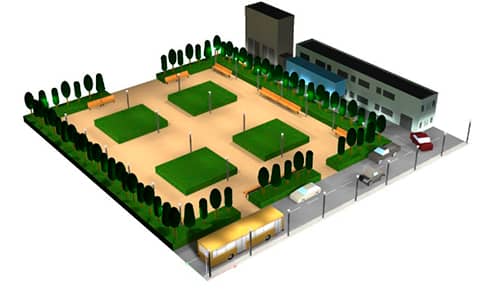
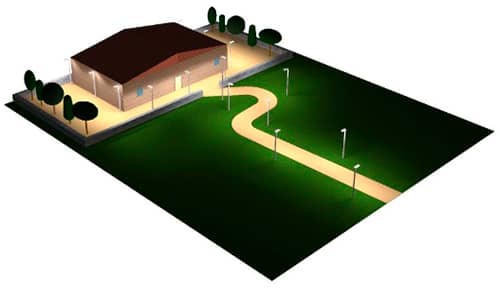
NEED MORE INFORMATION AND PRICES ▶ REQUEST WITHOUT OBLIGATION

